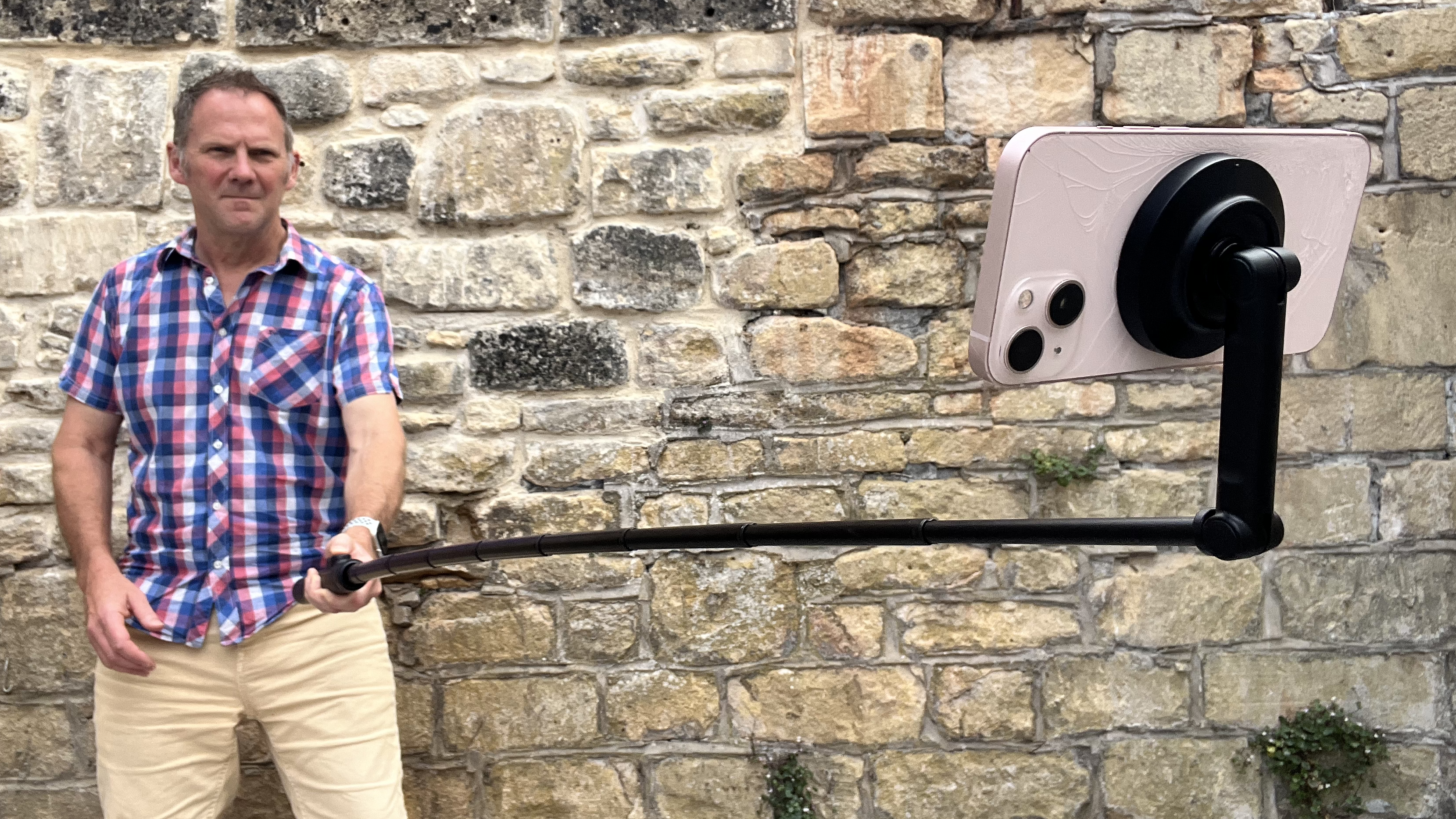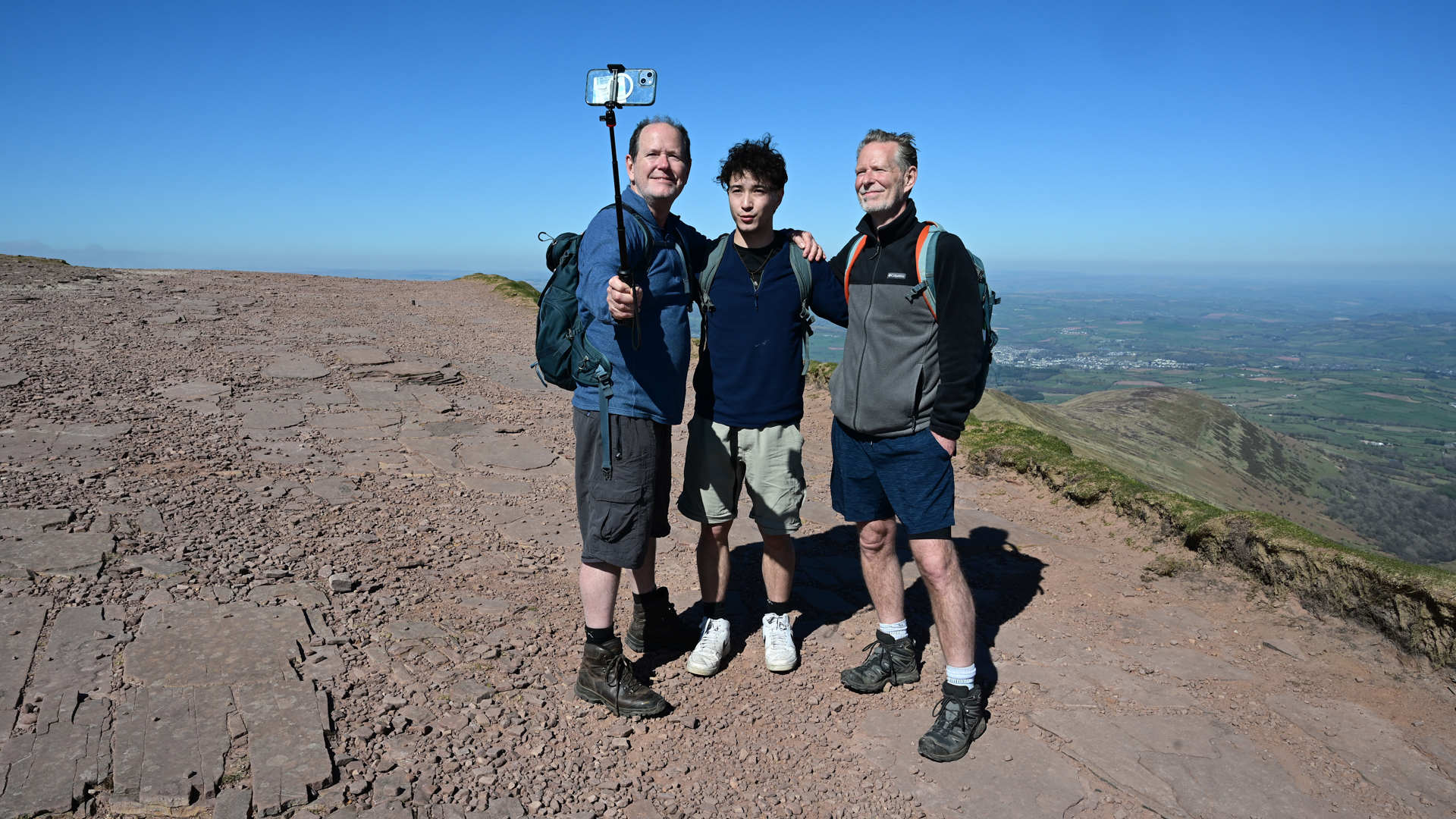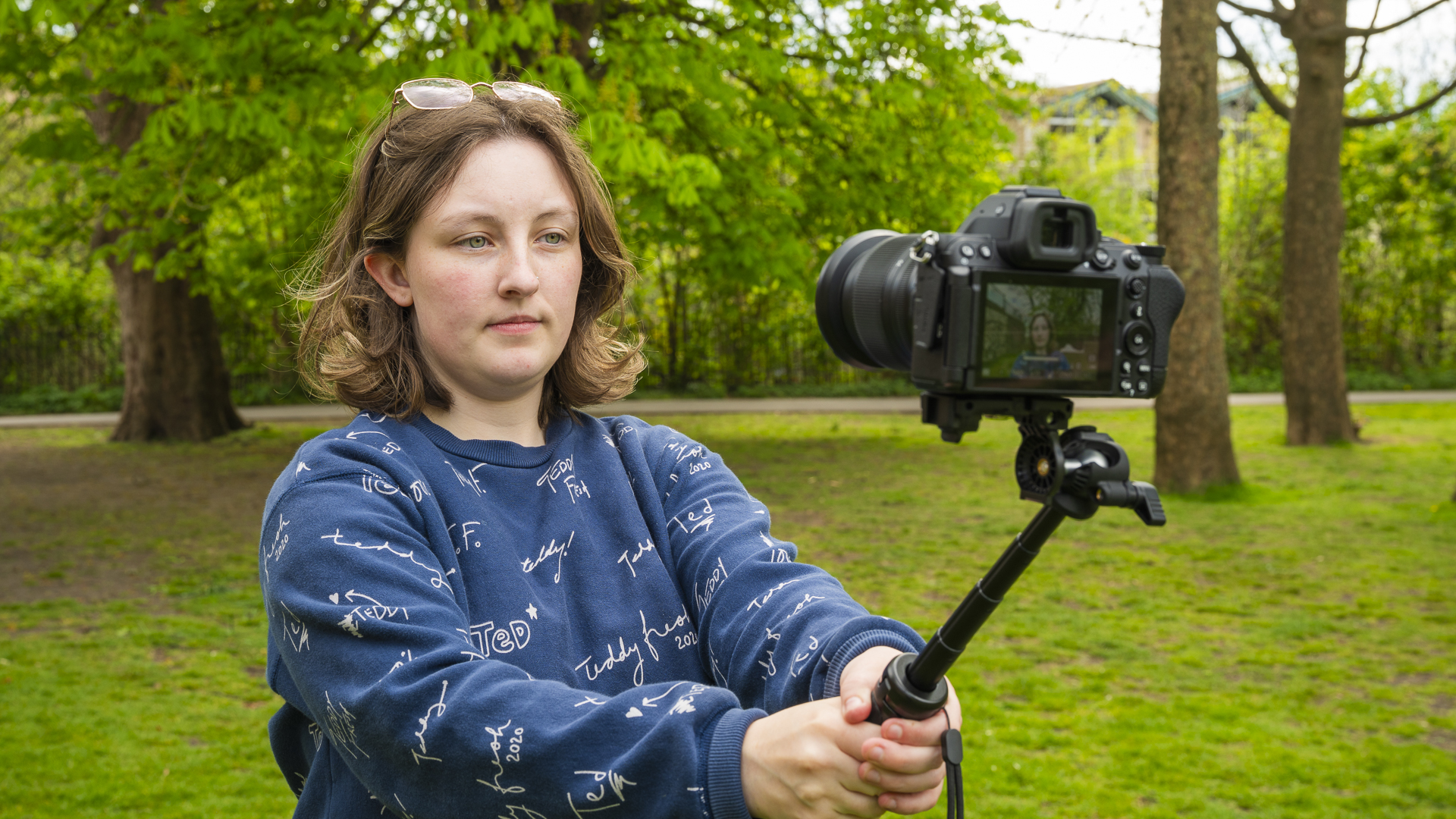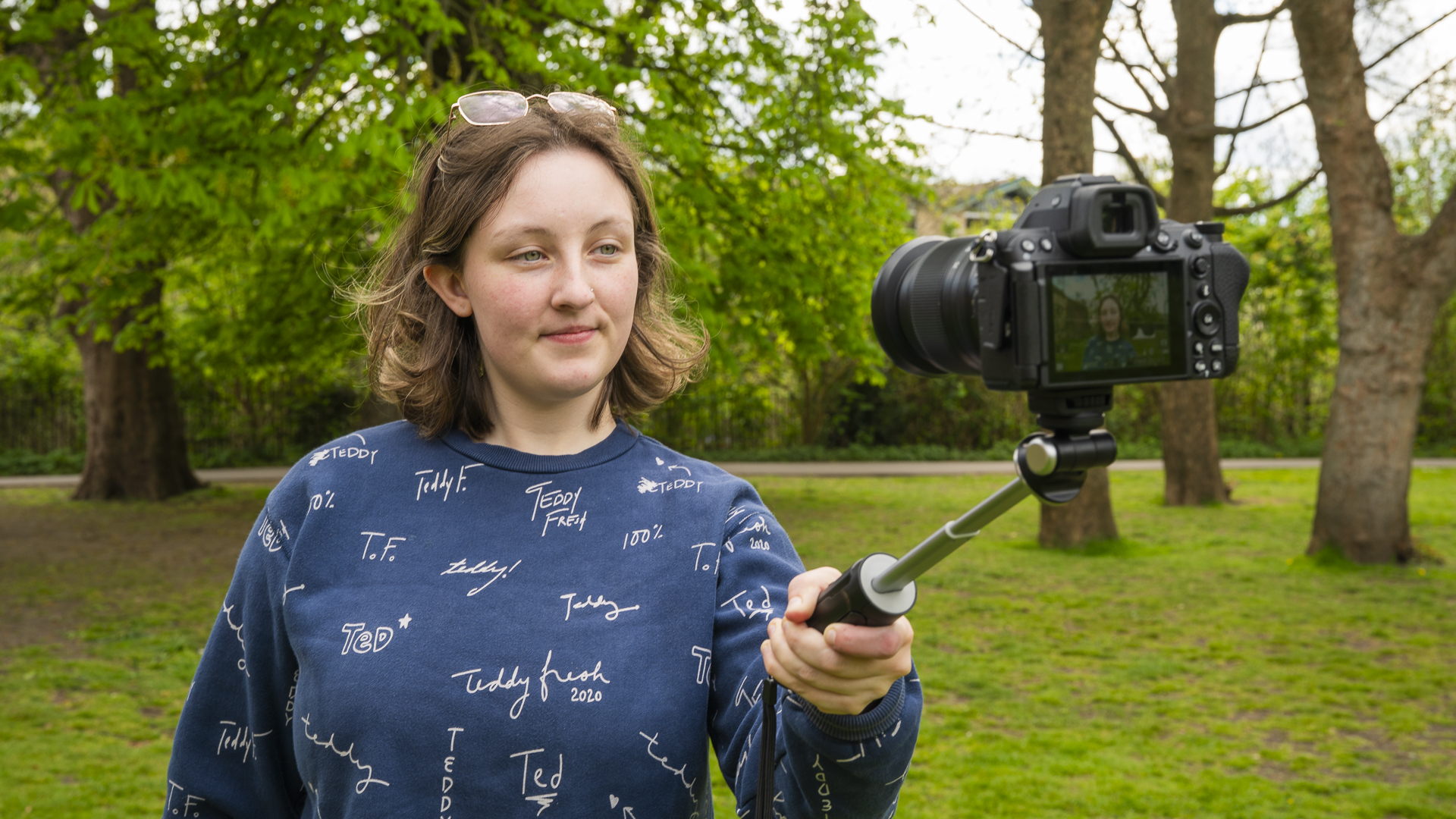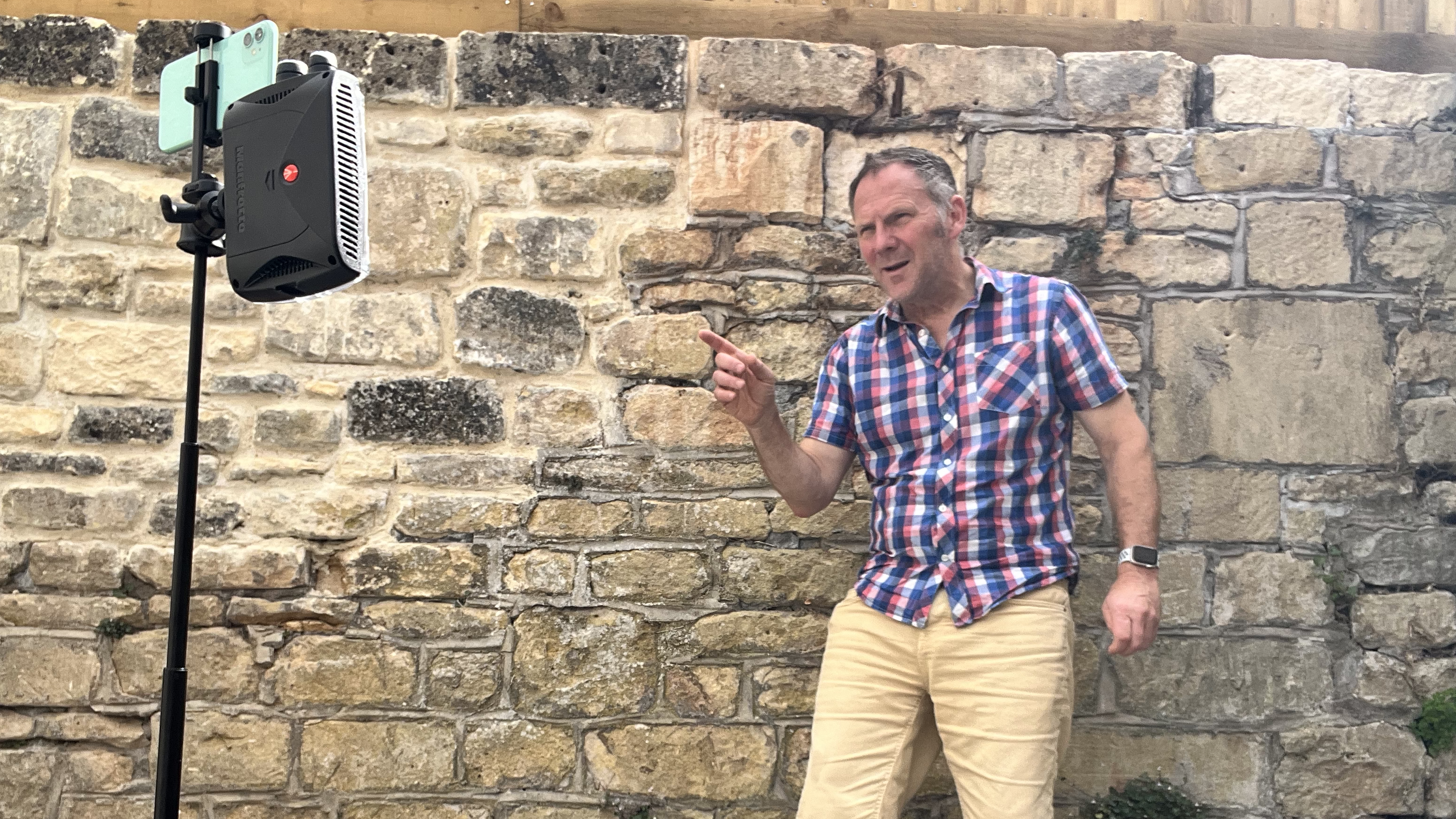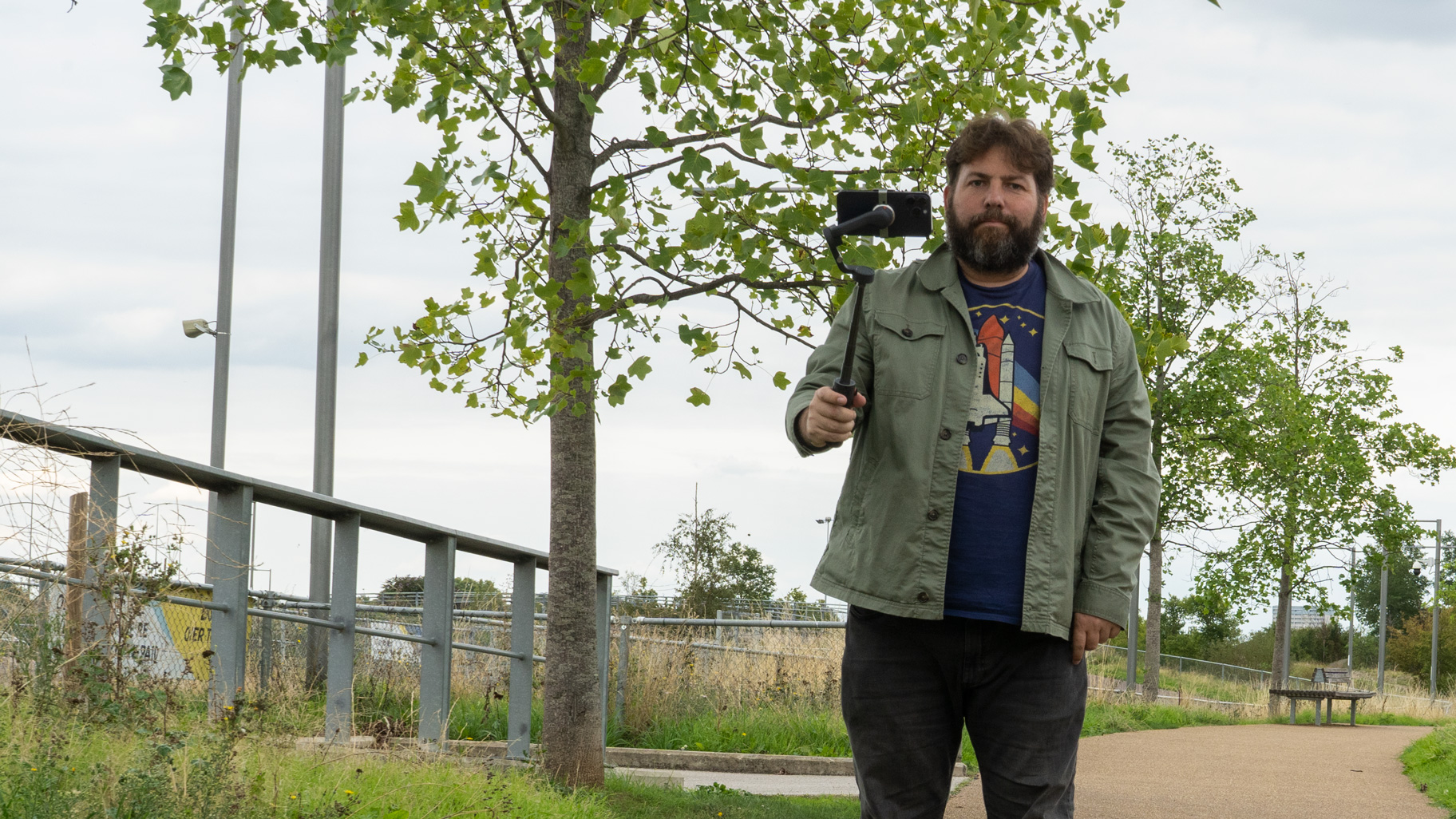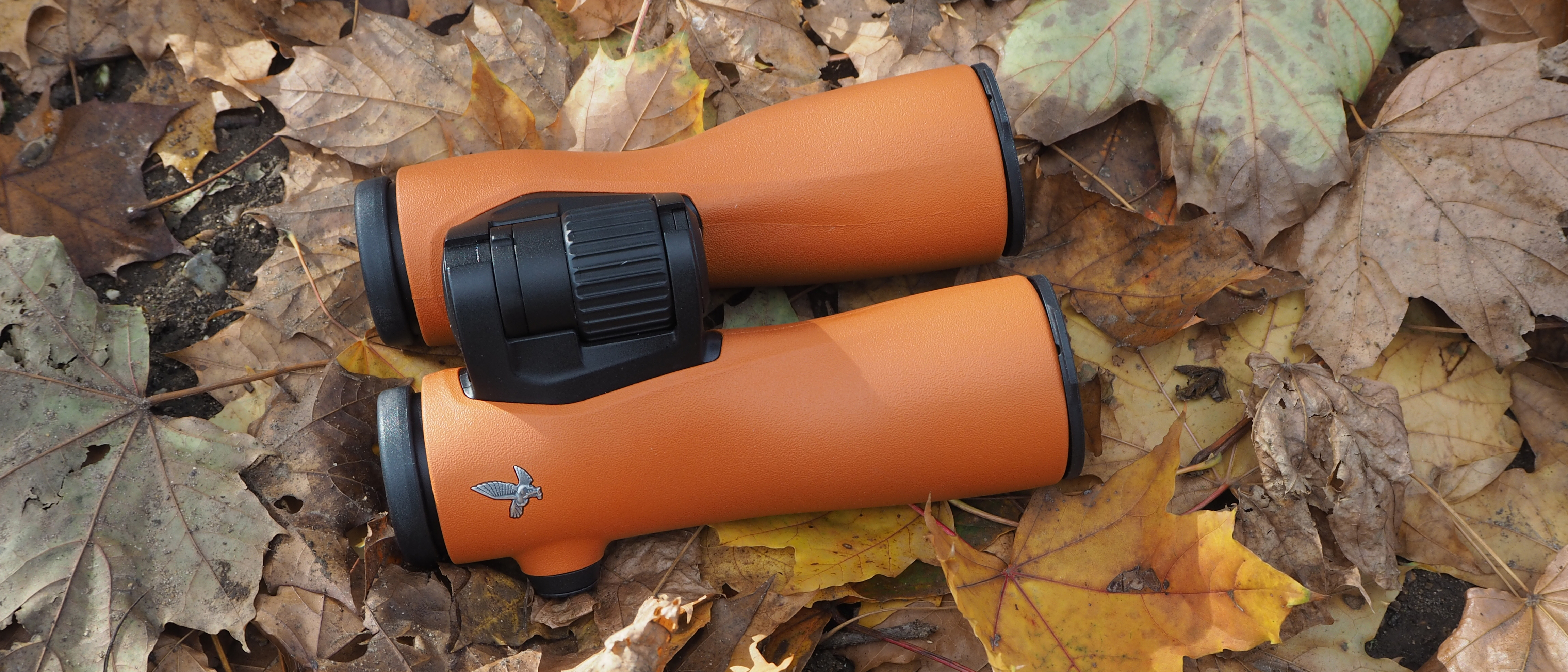The best selfie sticks in 2025: for your smartphone, GoPro or full-size camera
A selfie stick makes it easy to take group and individual self-portraits or shoot from up high for a bird's-eye view, while including more expansive backgrounds, and these are the best!
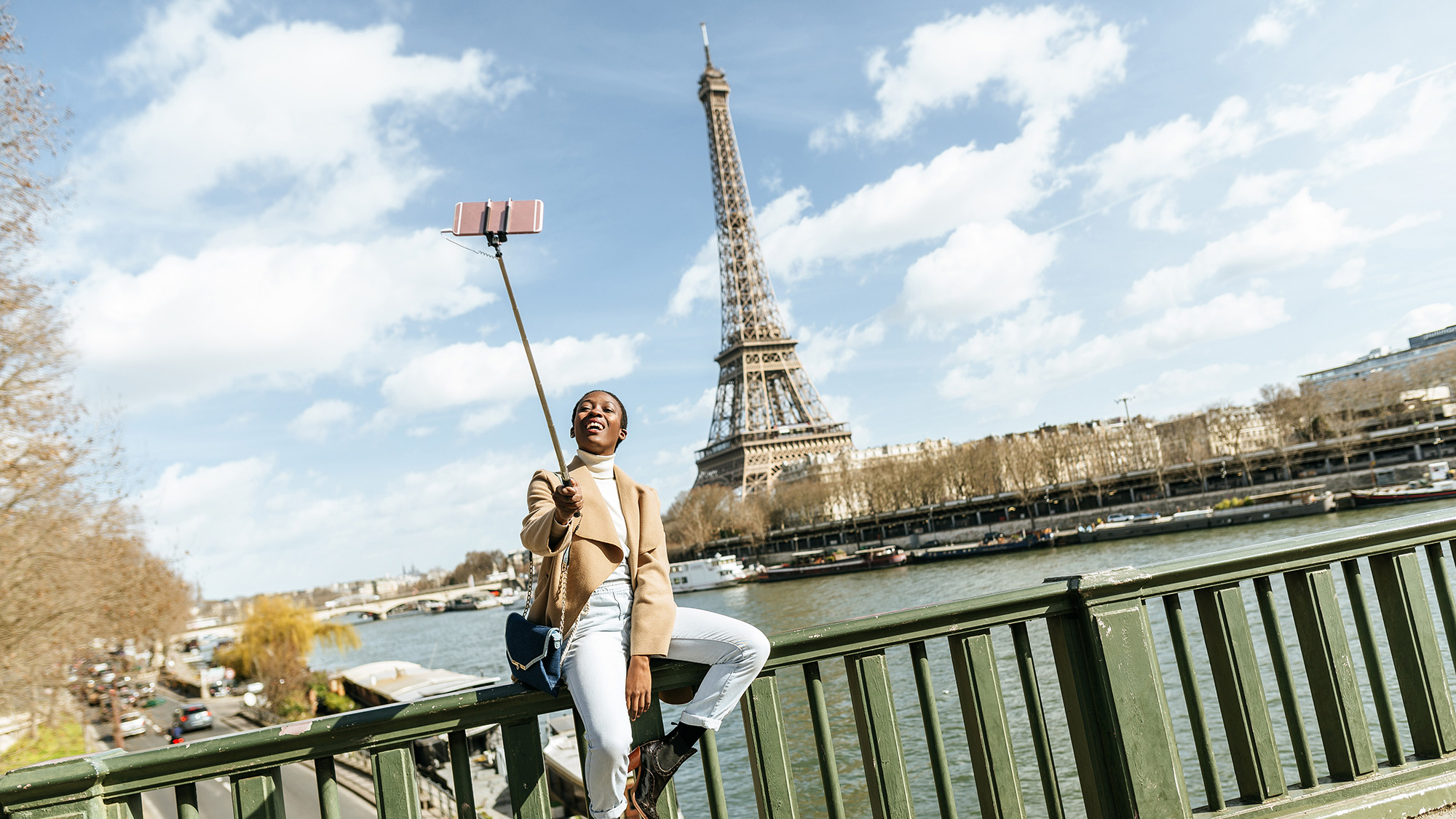
We all take selfies, but holding your phone or camera at arm's length to include yourself in the shot rarely gives a flattering image, with the combination of a wide-angle view and shooting up close exaggerating facial features, not to mention forcing an awkward pose with an outstretched arm. A selfie stick enables you to shoot yourself from a much more natural distance and is great for including yourself in group shots, as well as shooting from up high for an aerial view or to clear lofty obstacles.
But there's more to it than a simple long pole to attach your camera to. Many selfie sticks come with pop-out feet that can help alleviate shake in long exposures, without having to resort to a dedicated tripod. Some include a Bluetooth remote control, which enables the shutter to be fired or video recording to be activated remotely. And some stabilizing gimbals also offer selfie stick functionality, with the ability to smoothly pan from a selfie of the presenter to showing their point of view.
You'll also need to consider what you're shooting with. Many of the selfie sticks I tried are only suitable for smartphones, while others come with attachments for action cams or even heavier full-frame cameras. There is also a tradeoff in extended size and portability; you'll need to decide whether extending to a decent length is more important than something you can pack away in a pocket.
Investing in one of the best selfie sticks not only enables you to take pictures and videos of yourself in comfort but can open up a whole new world of photographic possibilities. With so many selfie stick options on the market, I'm here to help you find the best one for your needs and budget…
Digital Camera World's Guides Editor, Adam, is no stranger to a selfie, but is less keen on the unflattering results that inevitably come from an arm's-length shot. He knows that a selfie stick is the answer, but is also keenly aware that there's no one-size-fits-all solution, and is your guide to the best extending sticks for all manner of selfie situations.
The Quick List
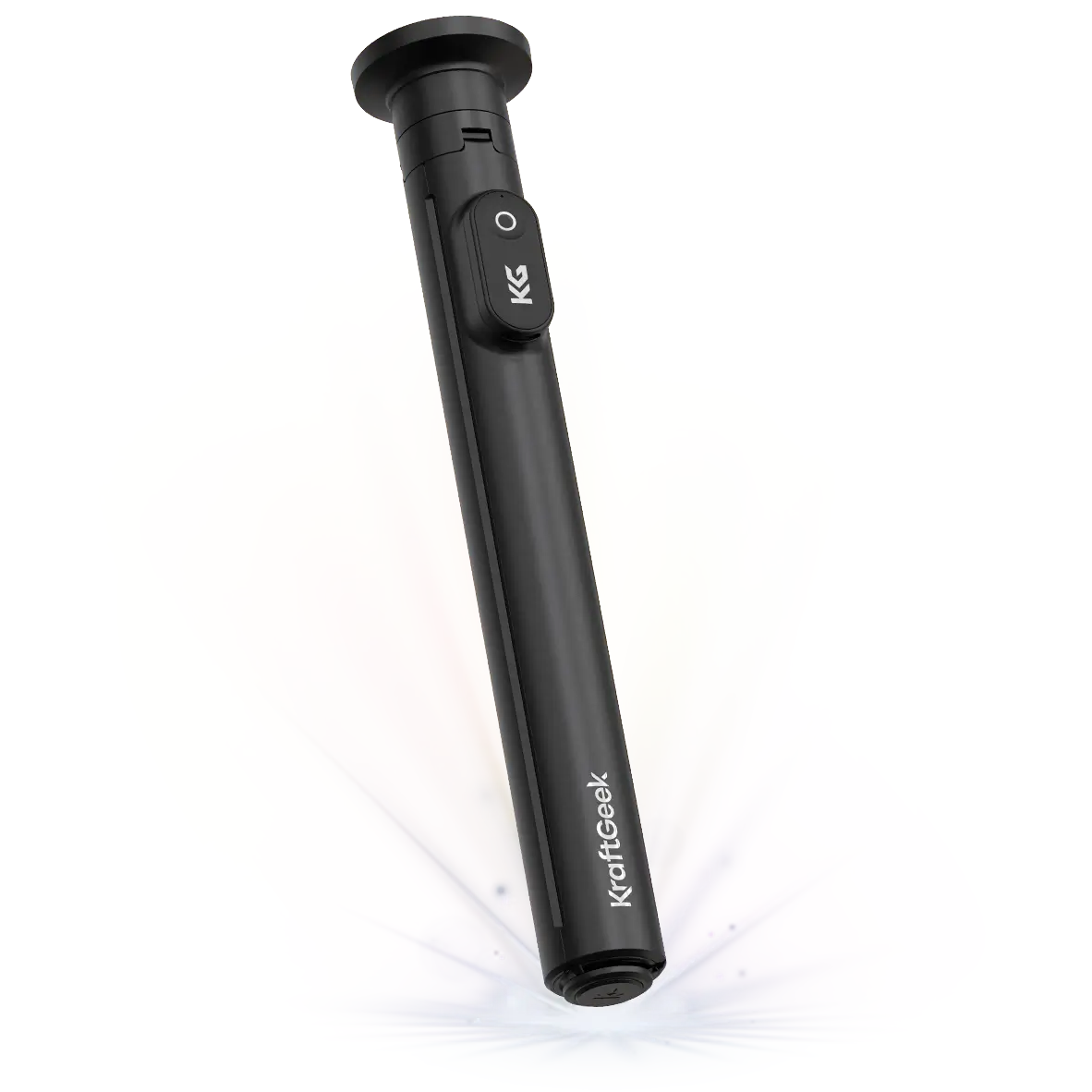
Stretching to an enormous 5 1/2 feet, this selfie stick goes much longer than most. It turns into a tripod with a simple tap, but you'll need a MagSafe-compatible phone.
Read more below
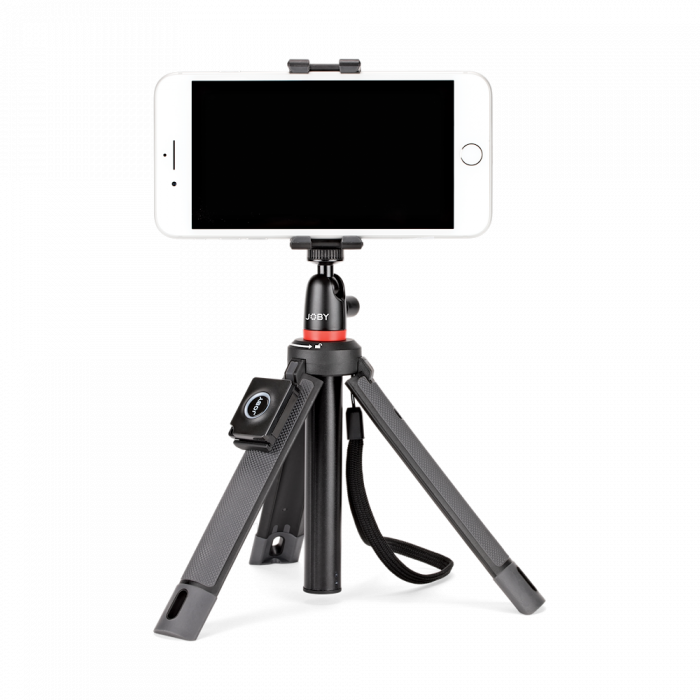
Weighing in at under 200g (7oz), Joby's selfie stick/mini tripod combo easily tucks into the spare corner of a bag – or even a back pocket.
Read more below
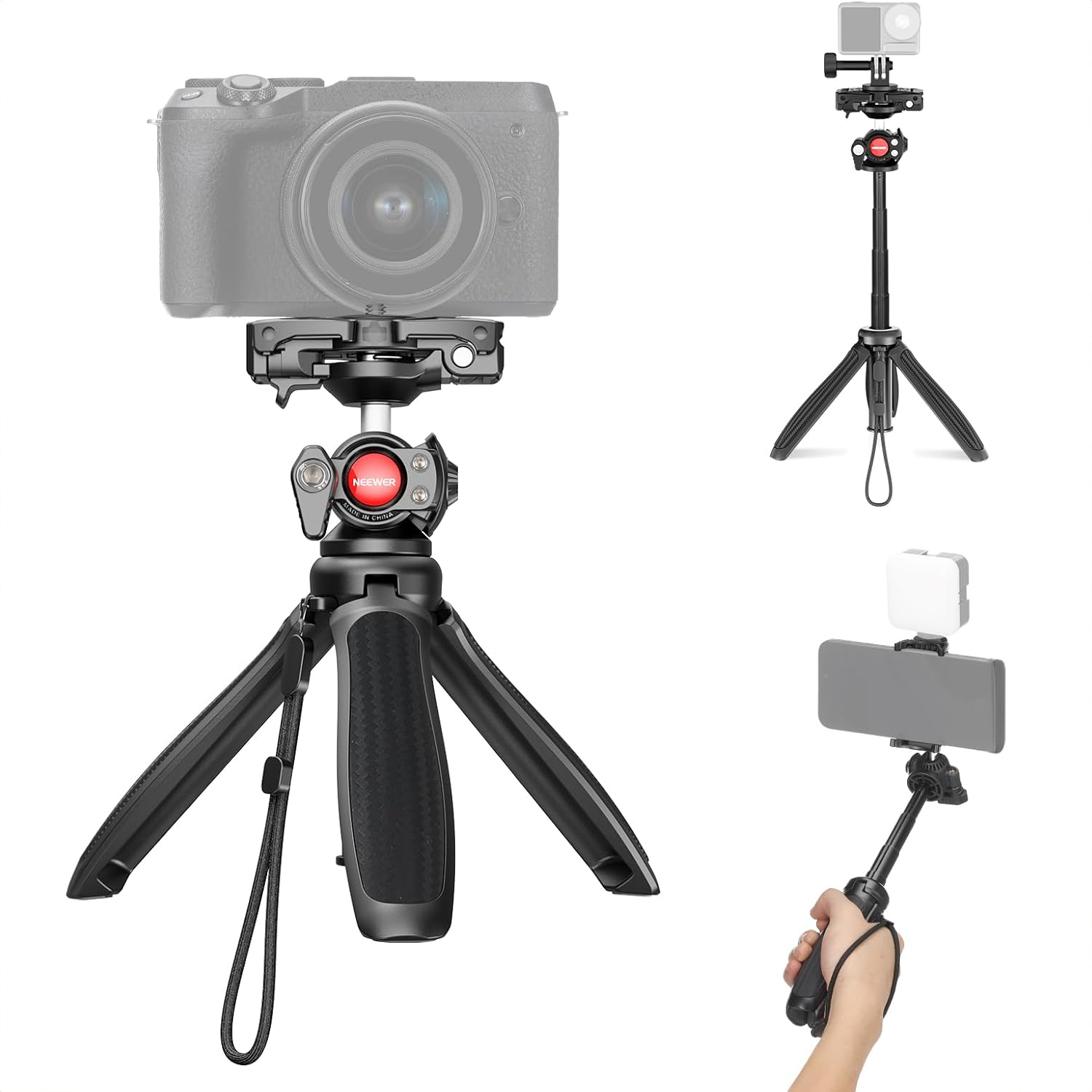
With a clever camera plate that converts to a phone holder, this selfie stick/tripod combo is ideal for those who shoot with both full-size cameras and smartphones.
Read more below
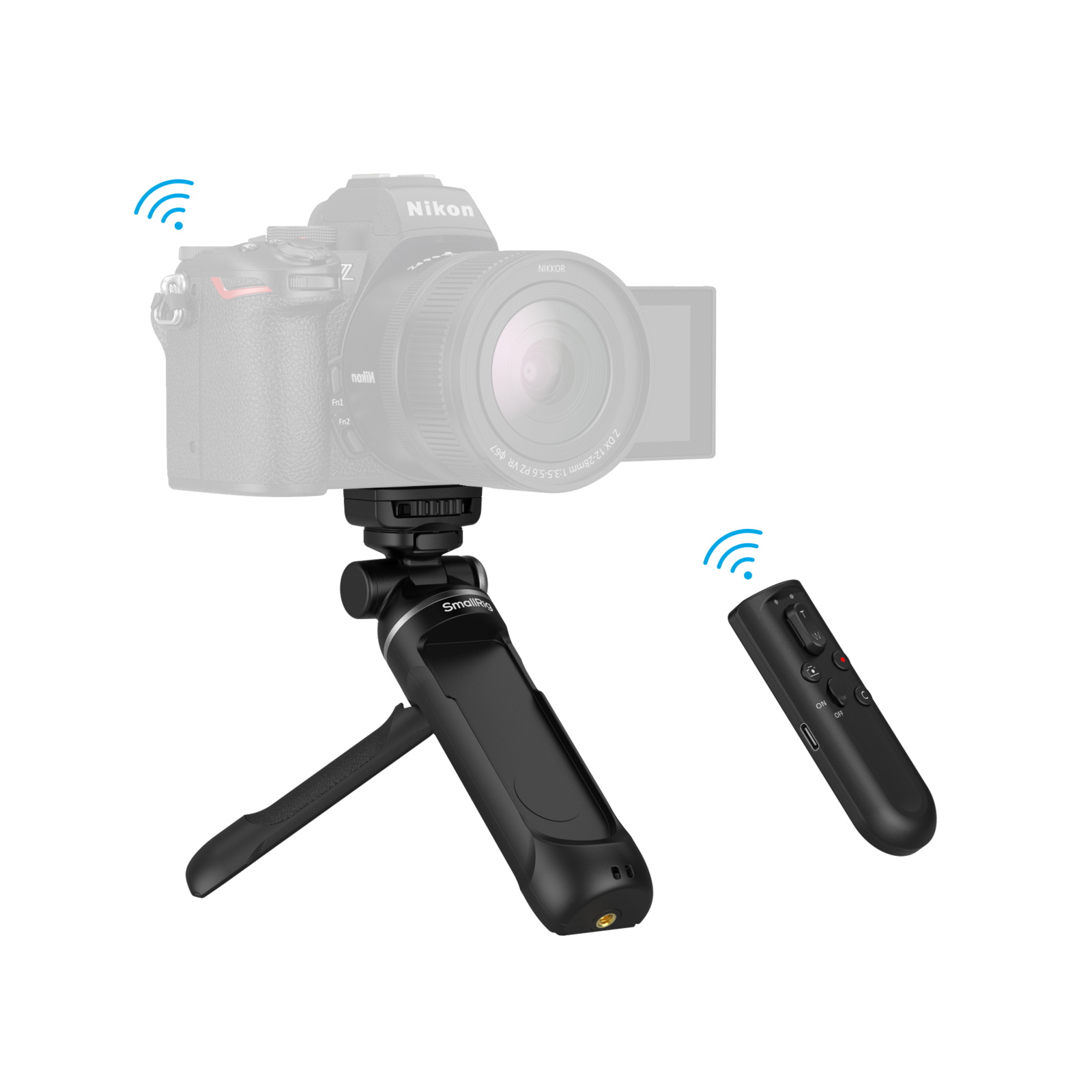
The standout feature of this full-size camera support is its sophisticated remote, which can control optical zoom in compatible lenses, as well as regular shooting functions.
Read more below

Whether you shoot with a phone, compact camera, or tablet, this convertible selfie stick has a versatile mount and attachments for lights, mics, and more.
Read more below
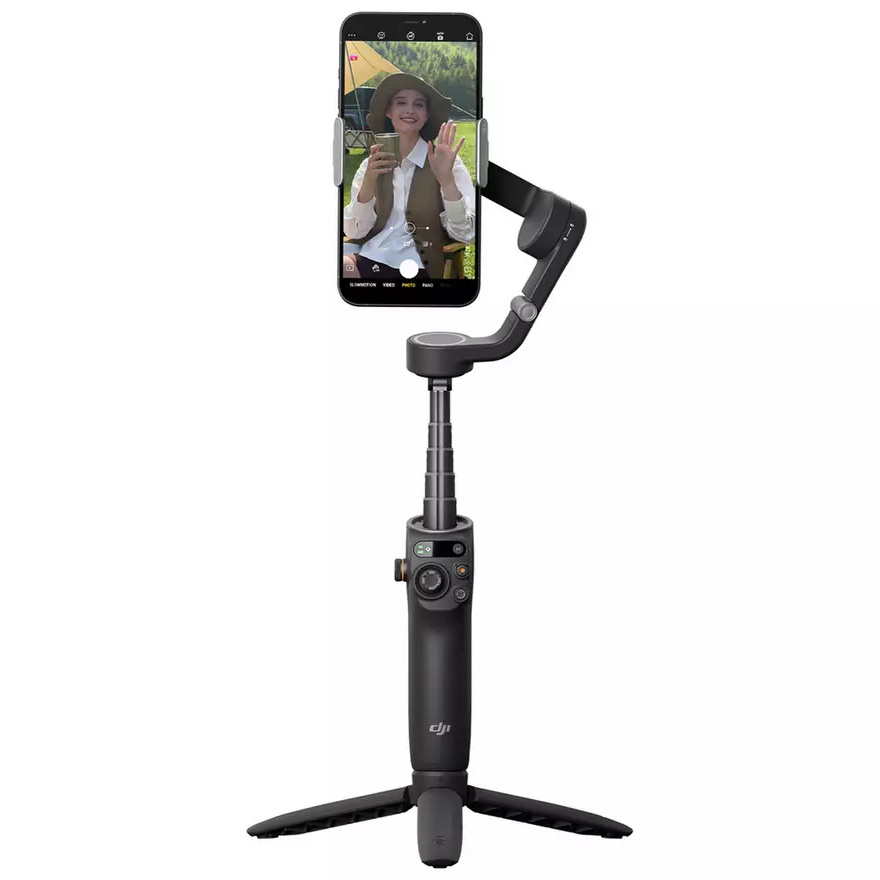
The ability to extend like a selfie stick is but a footnote in this phone gimbal's extensive feature list, which can really up your video game.
Read more below
The best selfie sticks
Why you can trust Digital Camera World
Best for iPhone
Specifications
Reasons to buy
Reasons to avoid
The KraftGeek JustTap Magnetic Phone Tripod is designed primarily for MagSafe-compatible iPhones, utilizing a strong magnetic mount that can securely hold up to 2.5kg. It will also hold phones in a magnetic case, and an adhesive magnetic ring is included. The product also comes with a rechargeable Bluetooth remote control with a 10m range, capable of up to 20,000 shutter activations on a single charge.
Its 'JustTap' functionality allows it to quickly transform from a selfie stick to a tripod by tapping its base gently on the ground, whereby three legs pop out to form a stable platform that can support your setup up to an impressive maximum height of 66 inches (5.5 feet), making it one of the tallest options available and perfect for eye-level shots.
While its extended height is hard to beat, this does limit its portability somewhat; with a stowed length of 13 inches, it's hardly a pocket-sized accessory. But its robust build and clever design earn it the number one spot for those with MagSafe phones. It offers great value, too.
See our full KraftGeek JustTap Magnetic Phone Tripod review
Best lightweight selfie stick
Specifications
Reasons to buy
Reasons to avoid
The Joby TelePod Mobile is a combined selfie stick and mini-tripod designed for phone photography or lightweight cameras. It folds small and has a grip that folds out to form tripod legs. A four-section telescoping center column extends to 56cm, almost three times its stowed size, and there's a cradle atop that has a sprung mechanism to grip your phone snuggly and also folds flush against the handle for stowage. The cradle can be removed to reveal a small ballhead with mouting screw for use with (very) lightweight cameras – the max payload is just 325g. It also comes with Joby's Impulse Bluetooth remote trigger for activating your phone's shutter.
I found the TelePod Mobile to be straightforward to use, with a twist-lock mechanism that works well. The ball head, while small, is suitable for holding light payloads like mobile phones. When used as a tripod, the leg splay is narrow but provides enough stability for its intended payloads. The device's ability to extend to over half a meter is useful for fitting small crowds into selfies and reaching decent heights as a mini-tripod. However, the drawbacks are that it is not suitable for heavier loads, and I found that the center column had a nasty habit of accidentally unlocking when adjusting the ball head. It feels pricey compared to some competitors, especially given its low payload capacity.
Overall, the Joby TelePod Mobile is a supremely portable device that is easy to use and has an impressive reach for its size. It is well-suited for phone photography and action cams, but users needing to support heavier equipment will need to look elsewhere.
Read more: Joby TelePod Mobile review
Best selfie stick for larger cameras
Specifications
Reasons to buy
Reasons to avoid
The Neewer TP38 is a two-in-one desktop mini-tripod and selfie stick that is designed to support both cameras and smartphones. It features a clever and versatile camera plate and phone cradle, which eliminates the need for separate attachments and makes it suitable for photographers frequently switching between using a phone and a dedicated camera.
The robust build quality feels more durable compared to some other tabletop tripod/selfie stick combinations, and the head is well-engineered, supporting a decent load rating. However, the device only offers a limited degree of extension via its non-locking telescopic center column.
I was impressed with the Neewer TP38's compact design and its usefulness in various shooting situations, including vlogging, live streaming, and general photography. It is a portable and practical solution for photographers and content creators who require a flexible support system and who switch between a traditional camera and a smartphone.
Read more: Neewer TP38 review
Best for remote control
Specifications
Reasons to buy
Reasons to avoid
I found the SmallRig SR-RG2 to be an interesting attempt at combining several camera support functions into one device. It's designed to work as a handheld grip, a selfie stick, and a tabletop tripod – all of which can be used in conjunction with a sophisticated remote that takes care of the main shooting functions. The device itself is about six inches long, and I found the rubberized, contoured grip comfortable to hold. Attaching my Nikon Z5 II mirrorless ful-frame camera was easy enough thanks to the standard tripod screw, and the head's tilt and pan functionality gave me some flexibility.
When I used it as a grip or selfie stick, I could operate my camera single-handedly, with controls for shutter release, video record, lens zoom, and a customizable button right at my fingertips. The extension for selfies was a nice touch, although it didn't add a huge amount of reach. Transforming it into a mini-tripod with the flip-out legs was simple, but I found the shooting height to be quite low as the column can't be extended in tripod mode.
The standout feature for me was the detachable Bluetooth control. It worked well with various camera models and offered more flexibility than many standalone remote shutter releases I've used. The inclusion of a wide/telephoto rocker, a two-stage shutter release, a dedicated video recording button, and a customizable button was a definite plus.
However, I have to admit that while the SR-RG2 is versatile, it doesn't truly excel in any single function. The selfie stick and tripod modes have their limitations. Despite this, I think it's a handy all-in-one solution, particularly for vloggers who need a compact and multifunctional tool. But if you're looking for a dedicated selfie stick, you might be better off with one of the other specialized products in this guide.
Best for vloggers
Specifications
Reasons to buy
Reasons to avoid
The KraftGeek Variety Tripod is a highly adaptable accessory designed specifically for content creators, including vloggers, influencers, and TikTokers. It seamlessly transitions between a selfie stick, a tabletop tripod, and a full-sized tripod. Made primarily of aluminum, the device is relatively lightweight at just 450g and can support a maximum load of 2kg, making it well-suited for smartphones and smaller cameras.
A key feature is its impressive maximum height (or length, in selfie stick mode), which extends to 62.5 inches (158cm), and is equally useful for large group selfies or creating professional 'to-camera' video presentations. Multiple cold shoe mounts enable easy attachment of accessories, such as microphones and LED lights. It comes with a flexible ball head for cameras and a rotating universal cradle for smartphones, offering compatibility with a wide array of devices.
While the extended height is a significant advantage, this comes at the cost of compactness when it's collapsed. It is not as portable as smaller, pocket-sized selfie sticks. However, this tradeoff is well worth it, as the Variety Tripod provides a solid and stable platform, and is a compelling and affordable choice for smartphone shooters who need a versatile and robust support system for their content creation needs.
See our full KraftGeek Variety Tripod review
Best extending stabilizer
Specifications
Reasons to buy
Reasons to avoid
The DJI Osmo Mobile 6 (OM6) is an all-in-one smartphone stabilizer and a selfie stick. It automatically stabilizes the phone, reducing camera shake in both stills and video, and the head twists, turns and rotates through all three axes to track subjects automatically. While the 215mm (8in) extension cannot match the lengths that dedicated selfie sticks go to, it nevertheless enables selfies to be shot from a decent distance.
DJI has steadily improved the Osmo Mobile line over several iterations, and this has a more 'pro' look and feel compared to the Osmo Mobile 5 that came before it. The OM6 introduces an analog control, which offers a great deal more subtlety in adjusting the movement of the head to which the phone is attached. The phone sits in a cradle that attaches to the body of the device via a magnet (so you can easily pull your phone off to use it), but is plenty strong enough to support the weight of a phone and is a lot more convincing in reality than you might imagine!
The OM6 doesn't take up much more space in a bag than a regular selfie stick (it’s positively svelte compared to earlier-generation Osmo models), but opens up a whole world of creative possibilities. Posts will be immeasurably improved, with silky smooth panning when used as a mini tripod. While it clearly costs a lot more than a simple selfie stick, it's an intriguing alternative if you have the budget, or its predecessor, the OM5, is noticeably cheaper.
Read more: DJI OM6 review (and check the DJI OM5 review too)
How we test
We test products by using them for their intended purpose; it's as simple as that. With selfie sticks, that has meant trying them to shoot selfie photos and videos, both solo and in groups, as well as testing functions such as the rigidity of tripod feet and the effectiveness of remotes.
See also
Best gimbals for iPhones and smartphones
Best gimbals for GoPros
The best iPhone and Android tripods and supports
The best mini tripods
Best invisible selfie sticks
The best camera deals, reviews, product advice, and unmissable photography news, direct to your inbox!

Prior to joining digitalcameraworld.com as Guides Editor, Adam was the editor of N-Photo: The Nikon Magazine for seven years, and as such is one of Digital Camera World's leading experts when it comes to all things Nikon-related.
Whether it’s reviews and hands-on tests of the latest Nikon cameras and lenses, sharing his skills using filters, tripods, lighting, L brackets and other photography equipment, or trading tips and techniques on shooting landscapes, wildlife and almost any genre of photography, Adam is always on hand to provide his insights.
Prior to his tenure on N-Photo, Adam was also a veteran of publications such as PhotoPlus: The Canon Magazine, so his wealth of photographic knowledge isn’t solely limited to the Big N.
